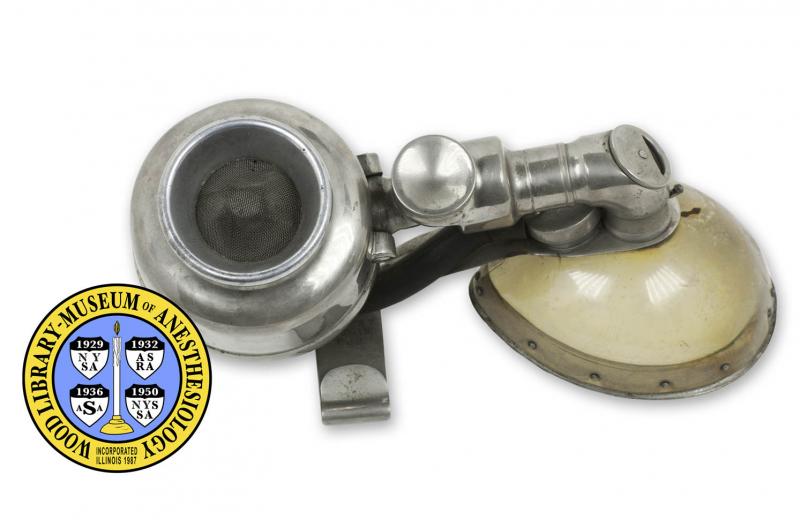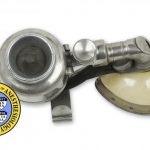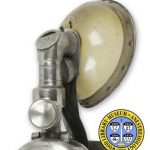Davis Inhaler
Surgeons greatly value the services of the anesthesiologists who work closely with them as a team.The famous neurosurgeon, Dr. Harvey W. Cushing (1869-1939) preferred to hire Dr. S. Griffith Davis (1867-1934). Encouraged by Cushing, Davis was the first to continuously monitor the patient's heart and lung sounds throughout the course of anesthesia.
This inhaler is one of several anesthesia devices invented by Davis. Introduced around 1913, it delivered a combination of nitrous oxide, oxygen and ether. Its safety features include a see-through, celluloid mask, and adjustable valves to control both the patient's inhaled and exhaled air. Part of the exhaled air was returned to the patient, a technique called "rebreathing". This added some carbon dioxide to the patient's air, helping to stimulate his breathing and reducing the amount of anesthetic needed.
Catalog Record: Davis Inhaler
Access Key: aijw
Accession No.: 431
Title: [Davis inhaler / designed by S. Griffith Davis.]
Author: Davis, S. Griffith, 1867-1943.
Title variation: Alt Title
Title: S. Griffith Davis Inhaler.
Publisher: [S.l. : s.n. ; ca 1916.]
Physical Description: 1 inhaler : celluloid, nickel plated brass, black rubber, wire mesh ; 23 x 11.5 x 14 cm.
Subject: Inhalers, Anesthesia.
Subject: Ether, Ethyl.
Subject: Carbon Dioxide.
Subject: Anesthesia, Inhalation.
Note Type: General
Notes: Title from the WLM name for the object.
Note Type: Citation
Notes: Shephard DA. Harvey Cushing and anaesthesia. Can Anaesth Soc J.
1965;12(5):438.
Note Type: Physical Description
Notes: The inhaler consists of metal tubing and valves, a rubber tube, oronasal mask
and cylinder anesthetic container; Medal lines the rim of the celluloid
oronasal mask; The mask has two openings; One opening is to the metal tubing
that includes an adjustable opening for air and an adjustable inspiratory
valve; The other end of the metal tubing connects to the anesthetic container
at its side; Just beyond the second opening in the facemask is an expiratory
valve, and then a black rubber hose that enters the anesthetic container at
the center of its bottom end, directing exhaled air into the anesthetic
container for partial rebreathing; The anesthetic container is a short
cylinder with a neck and outward-flared opening; When the mask faces down (as
to a supine patient) the top of the anesthetic container opens upward; Wire
mesh sits in the opening of the container.
Note Type: Reproduction
Notes: Photographed by Mr. William Lyle, 7/14/2010.
Note Type: Historical
Notes: Dr. S. Griffith Davis was the first independent neurosurgical anesthetist.
Davis was preferred, and regularly engaged, by neurosurgeon Harvey Williams
Cushing for the administration of anesthesia. In fact, Cushing paid Davis out
of his own pocket when he provided pro bono surgical services. Encouraged by
Cushing, Davis was the first to continuously monitor cardiac and respiratory
sounds during the entire course of anesthesia (Shephard, 1965).
Note Type: Publication
Notes: Bingham WF. The early history of neurosurgical anesthesia. J Neurosurg.
1973;39(5):568-84.



